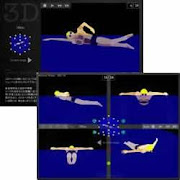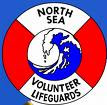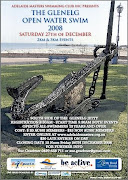
Courtesy of WOWSA, Huntington Beach, California.
Michael Oram, an inductee in the International Marathon Swimming Hall of Fame with hundreds of successful English Channel swims under his belt, gave these words of wisdom* to the Google Channel Swimmers Group:
"If you attempt to swim the English Channel, you can be risking death or serious injury."
"[Channel swimming] is a serious sport that should be treated with the greatest of respect. It is defiantly in the same category as Mount Everest and the many other extreme endurance sports that people try these days."
"Mount Everest has been climbed by about 3,800 people at the last count I saw - about three time more than those that have successfully swim the English Channel - and in half the number of years."
"The death rate [of Mount Everest] can be around 10% every year. You get what you pay for - the standard of your guides and organisers is optional as is the price. You should carefully choose who you put your life expectancy with. Without the support backup the climber is nothing."
"Likewise in the English Channel, you rely on the organisation that is put together by volunteers and you swim under a tight set of rules. Your pilot and their team are the professionals you rely on to get you across safely - without them, the swimmer might just as well stay on the beach. For years now, the pilots have been tucked away in the shadows. We know our place and as pilots have a understanding of attitudes - if the swim is successful, it's down to the swimmer; if it's a failure, it's down to the pilot and the weather."
"We live with that, knowing that what we do to the best of our abilities and as safely and professionally as we can considering the environment we work in. Lack of preparation, egos and dreams are all part of the pitfalls that unprepared swimmers hit when they turn up at Dover and look at the cliffs of France on a sunny day."
"Channel swimming looks safe (from a distance) and safety comes first, second and third. The pilots and shore support are continually trying to keep things as safe as possible."
"This was the case [last week] by the way [a swimmer] was taken from the water and everything was put in place for speedy attention. [Another swimmer] made the extreme effort [last week] knowing what she was taking on, it was her second [attempt] and unfortunately, it ended a half mile from the [French] beach. Last year, Ros Hardiman did 24 hours and had to be taken out of the water 1,400 metres from the French shore."
"This is one of the world's top swim, if not the world's top swim. It is so because it is the combination of the tides, wind, sea conditions, water temperature, air temperature, the restriction of two land masses and the fact that it lies in the area of the polar front / jetstream effect. When all that is taken into effect, you add things like the movement of water between the Atlantic and the North Sea through a 18 nautical mile bottleneck, the weather patterns that run up the east coast of America and cross the Atlantic collecting moisture, a little bit of the warm air from the Azores high-pressure region and the temperature of the land mass of Europe."
"It's the pilot that has to draw the line between hope, expectation, success and safety. Safety always has to win."
Copyright © 2009 by World Open Water Swimming Association




















No comments:
Post a Comment